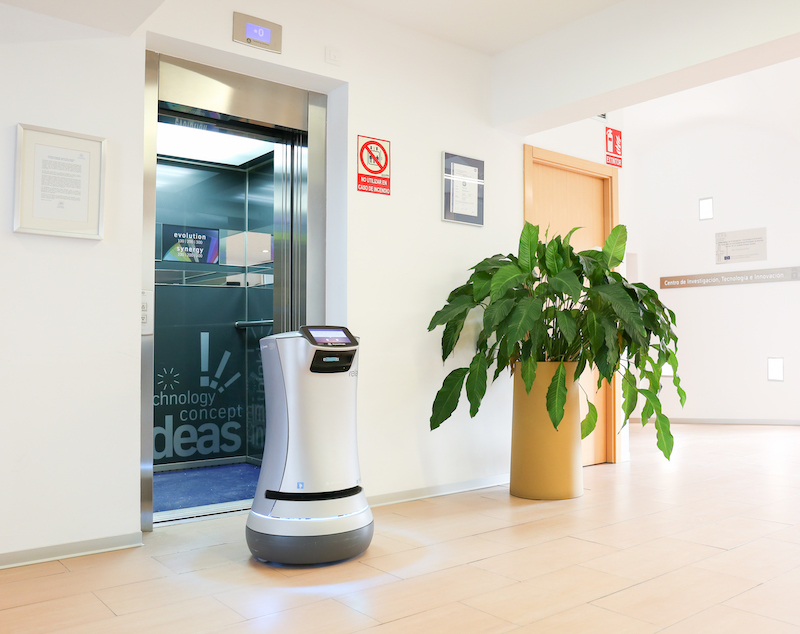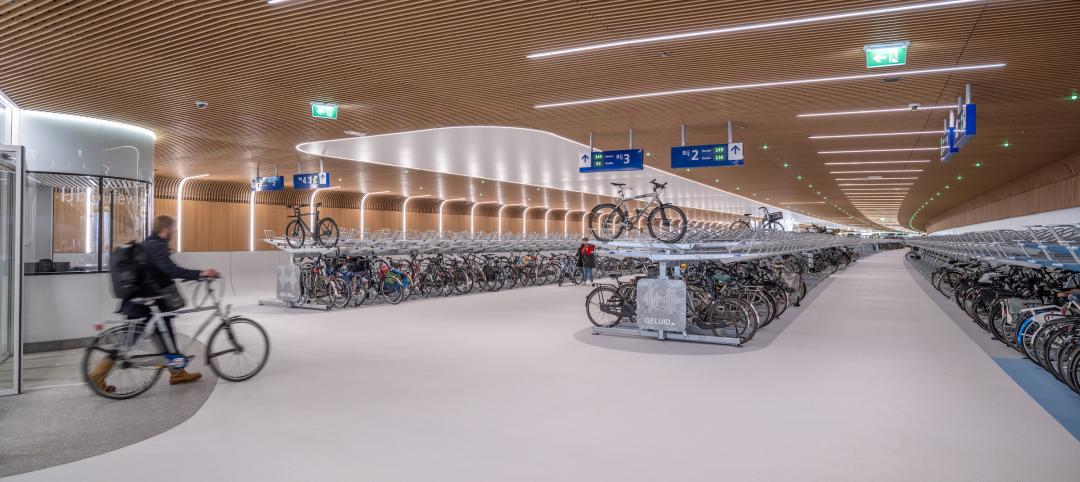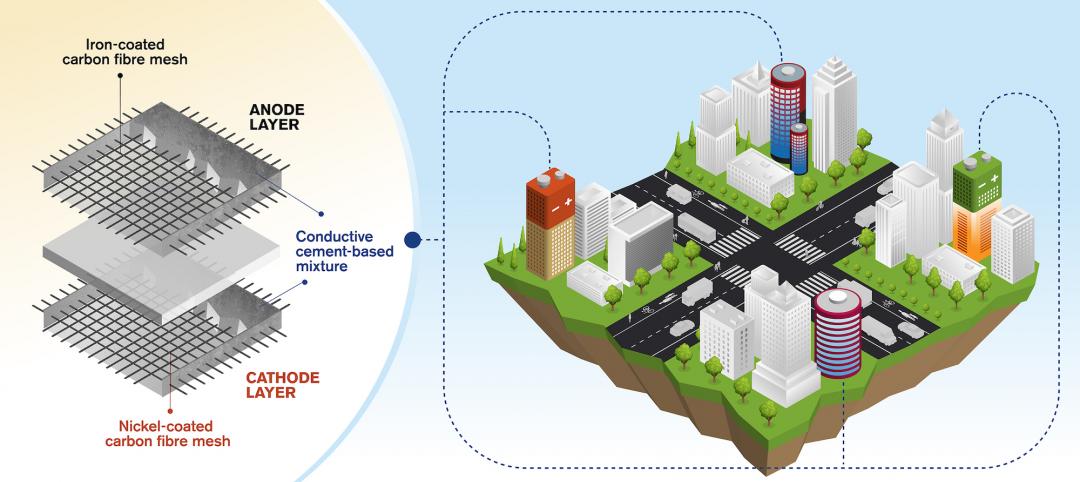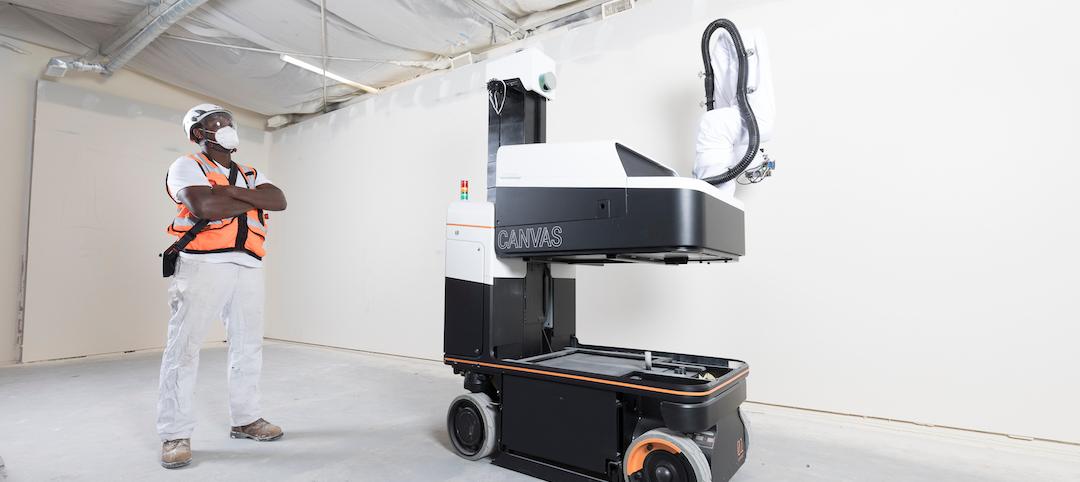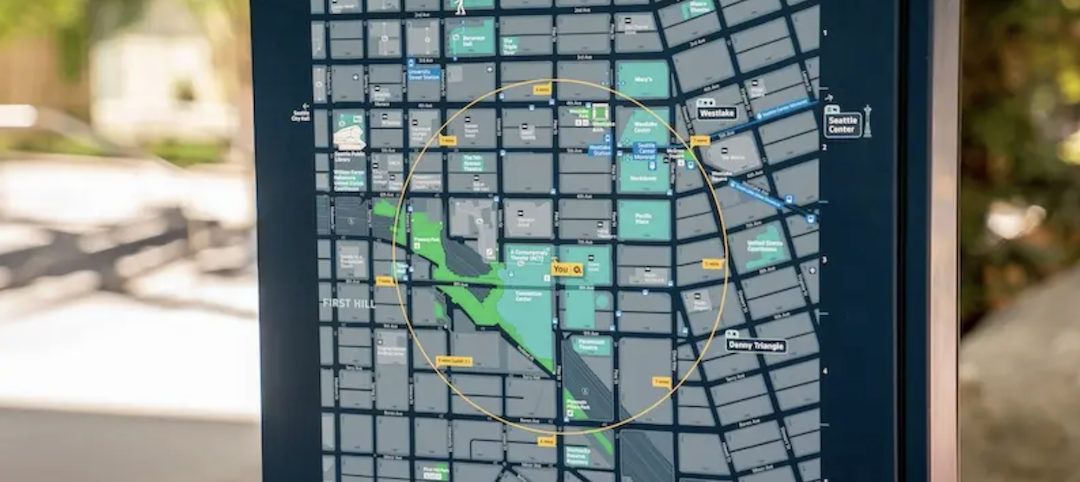Imagine you are standing in an elevator, patiently waiting to arrive at your floor. Before you arrive at your destination, the cab slows to a stop to pick up another passenger.
But as the doors slide open, you see it isn’t another person at all. It’s a robot. After a slight pause, the robot rolls in and selects its desired floor. A few seconds of awkward elevator music later, the doors open again and the robot rolls out without a parting word. You are left standing there, a little confused, a little curious, and just the slightest bit unsettled.
How is it possible that a robot can use an elevator? Well, it’s simple now, thanks to thyssenkrupp Elevator North America’s new robotics interface platform.
Previously, there was no way for delivery robots to operate elevators independently. This limited their use in multistory buildings in urban centers.
But thyssenkrupp’s interface facilitates communication between the robot and the elevator, allowing them to call one and make floor selections like a human passenger.
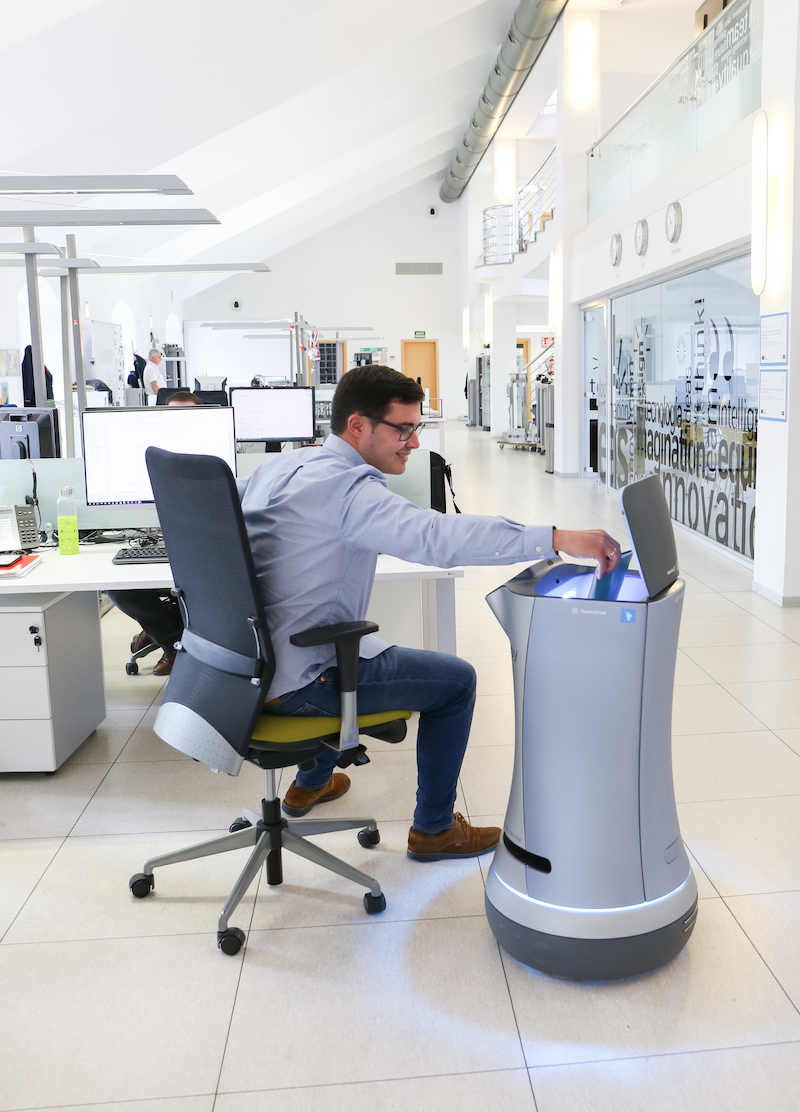
Instead of an R2-D2–like gadget rising from the top of the robot to manually push a button, the interface allows a robot to interact with the elevator wirelessly via Wi-Fi or 4G LTE through thyssenkrupp’s TAC family of controllers. After an elevator arrives, the robot uses Machine Vision to determine if there is enough room to enter or if the cab is full. While the interface is only compatible with the manufacturer’s software and hardware, it can be installed in as little as one day.
See Also: Skanska designs personal protective equipment tailor-made for the female workforce
Thyssenkrupp has partnered with leading robot manufacturers to successfully integrate this technology in several hotel and hospital projects across the country. Robotic elevator interfaces have been used to assist with housekeeping, room and luggage service, security patrolling and concierges, and pharmaceutical and package delivery.
According to thyssenkrupp, incorporating the elevator interface with delivery robots can help building owners manage and improve in-house logistics, increase productivity, and maximize the tenant experience.
This software comes at an opportune time, as the delivery robot market is expected to nearly triple between 2018 and 2024, growing from $11.9 million to $34 million, according to a study by Markets and Markets.
Related Stories
Cladding and Facade Systems | Apr 5, 2023
Façade innovation: University of Stuttgart tests a ‘saturated building skin’ for lessening heat islands
HydroSKIN is a façade made with textiles that stores rainwater and uses it later to cool hot building exteriors. The façade innovation consists of an external, multilayered 3D textile that acts as a water collector and evaporator.
Transportation & Parking Facilities | Mar 23, 2023
Amsterdam debuts underwater bicycle parking facility that can accommodate over 4,000 bikes
In February, Amsterdam saw the opening of a new underwater bicycle parking facility. Located in the heart of the city—next to Amsterdam Central Station and under the river IJ (Amsterdam’s waterfront)—the facility, dubbed IJboulevard, has parking spots for over 4,000 bicycles, freeing up space on the street.
Concrete | Jan 24, 2023
Researchers investigate ancient Roman concrete to make durable, lower carbon mortar
Researchers have turned to an ancient Roman concrete recipe to develop more durable concrete that lasts for centuries and can potentially reduce the carbon impact of the built environment.
Sponsored | Resiliency | Dec 14, 2022
Flood protection: What building owners need to know to protect their properties
This course from Walter P Moore examines numerous flood protection approaches and building owner needs before delving into the flood protection process. Determining the flood resilience of a property can provide a good understanding of risk associated costs.
Giants 400 | Nov 14, 2022
4 emerging trends from BD+C's 2022 Giants 400 Report
Regenerative design, cognitive health, and jobsite robotics highlight the top trends from the 519 design and construction firms that participated in BD+C's 2022 Giants 400 Report.
AEC Tech | Apr 13, 2022
A robot automates elevator installation
Schindler—which manufactures and installs elevators, escalators, and moving walkways—has created a robot called R.I.S.E. (robotic installation system for elevators) to help install lifts in high-rise buildings.
AEC Tech Innovation | Mar 9, 2022
Meet Emerge: WSP USA's new AEC tech incubator
Pooja Jain, WSP’s VP-Strategic Innovation, discusses the pilot programs her firm’s new incubator, Emerge, has initiated with four tech startup companies. Jain speaks with BD+C's John Caulfield about the four AEC tech firms to join Cohort 1 of the firm’s incubator.
Great Solutions | Jan 18, 2022
Researchers develop concept for rechargeable cement-based batteries
Researchers from the Department of Architecture and Civil Engineering at Chalmers University of Technology in Gothenburg, Sweden, have created a concept for rechargeable batteries made of cement. The concept involves a cement-based mixture with small amounts of short carbon fibers added to increase conductivity and flexural toughness.
Great Solutions | Nov 22, 2021
Drywall robots take the risk out of the finishing process
Canvas is using robots to complement the work already being done by drywall professionals.
Great Solutions | Sep 23, 2021
Seattle looks to become America’s most walkable city with a new citywide wayfinding system
Seamless Seattle will support the Seattle Department of Transportation’s commitment to increase the percentage of trips made by walking to 35% by 2035.


